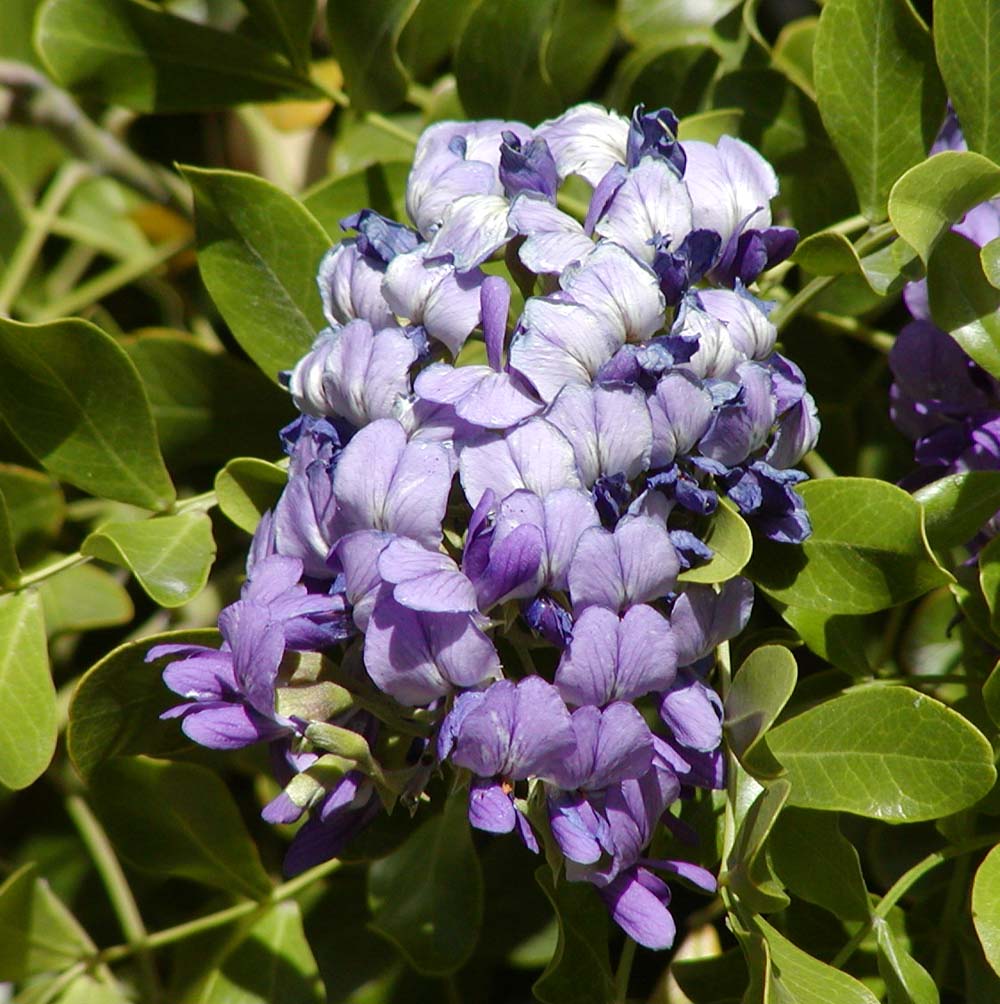- Mescalbean
image_width = 240px
image_caption = "Calia secundiflora" flowers and leaves
regnum =Plant ae
divisio = Magnoliophyta
classis = Magnoliopsida
ordo =Fabales
familia =Fabaceae
subfamilia =Faboideae
tribus =Sophoreae
genus = "Calia"
genus_authority = Terán & Berland.
subdivision_ranks = Species
subdivision = See text.The Mescalbean, Mescal Bean or Frijolito ("Calia") is a genus of three or four species of
shrub s or smalltree s in the subfamilyFaboideae of the pea familyFabaceae . The genus is native to southwesternNorth America from westernTexas toNew Mexico andArizona in theUnited States , and south through Chihuahua,Coahuila andNuevo León in northernMexico .Although still commonly treated in the genus "
Sophora ", recent genetic evidence has shown that the mescalbeans are only distantly related to the other species of "Sophora".Species
*"Calia arizonica" (S. Watson) Yakovlev - Arizona Mescalbean (syn. "Sophora arizonica"). Arizona, Chihuahua.
**"Calia arizonica" subsp. "formosa" (Kearney & Peebles) Yakovlev (syn. "Calia formosa", "Sophora arizonica" subsp. "formosa", "Sophora formosa"). Arizona.
*"Calia gypsophila" - Guadalupe Mescalbean (syn. "Sophora gypsophila"). Southern New Mexico, west Texas, Coahuila; endangered.
*"Calia secundiflora " (Ortega) Yakovlev - Texas Mescalbean (syn. "Sophora secundiflora"). Texas, New Mexico, Coahuila, Nuevo León.Mescalbeans grow to 1-11 m tall, with a trunk up to 20 cm diameter, often growing in dense thickets reproducing from
root sprouts. The leaves areevergreen , leathery, 6-15 cm long, pinnate with 5-11 oval leaflets, 2-5 cm long and 1-3 cm broad. Theflower s, produced in spring, are fragrant, purple, typical pea-flower in shape, borne in erect or spreadingraceme s 4-10 cm long. Thefruit is a hard, woodylegume 2-15 cm long, containing 1-6 oval bright redseed s 1-1.5 cm long and 1 cm diameter.All parts of the mescalbeans are very
poison ous, containing thealkaloid cytisine ("not"mescaline , as suggested by the name). The seeds or other parts of the plant have been reported to have been used as a hallucinogen by some Native American people, but this is uncertain, due to confusion over names. The symptoms of cytisine poisoning are very unpleasant, includingnausea andseizure s; as little as one seed can be fatal.Mescalbeans are sometimes mistakenly called "Mountain-laurel", a name that properly refers to the very dissimilar and unrelated genus "
Kalmia " (familyEricaceae ).References
*The relationship of Sophora sect. Edwardsia (Fabaceae) to Sophora tomentosa, the type species of the genus Sophora, observed from DNA sequence data and morphological characters. "Bot. J. Linn. Soc." 146: 439-446 (2004). [http://www.blackwell-synergy.com/doi/abs/10.1111/j.1095-8339.2004.00348.x Available online] .
Wikimedia Foundation. 2010.

